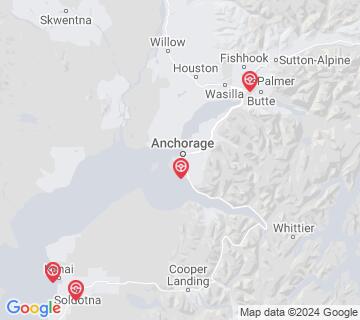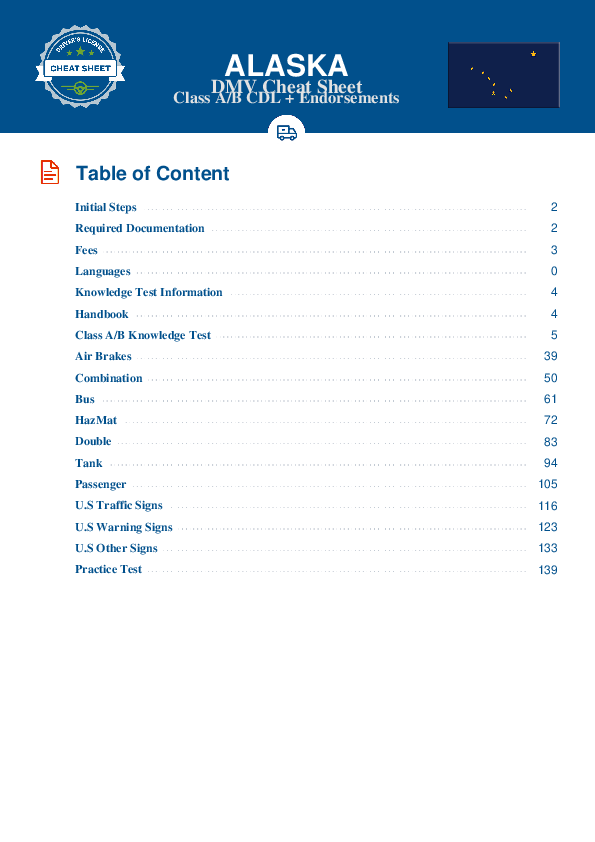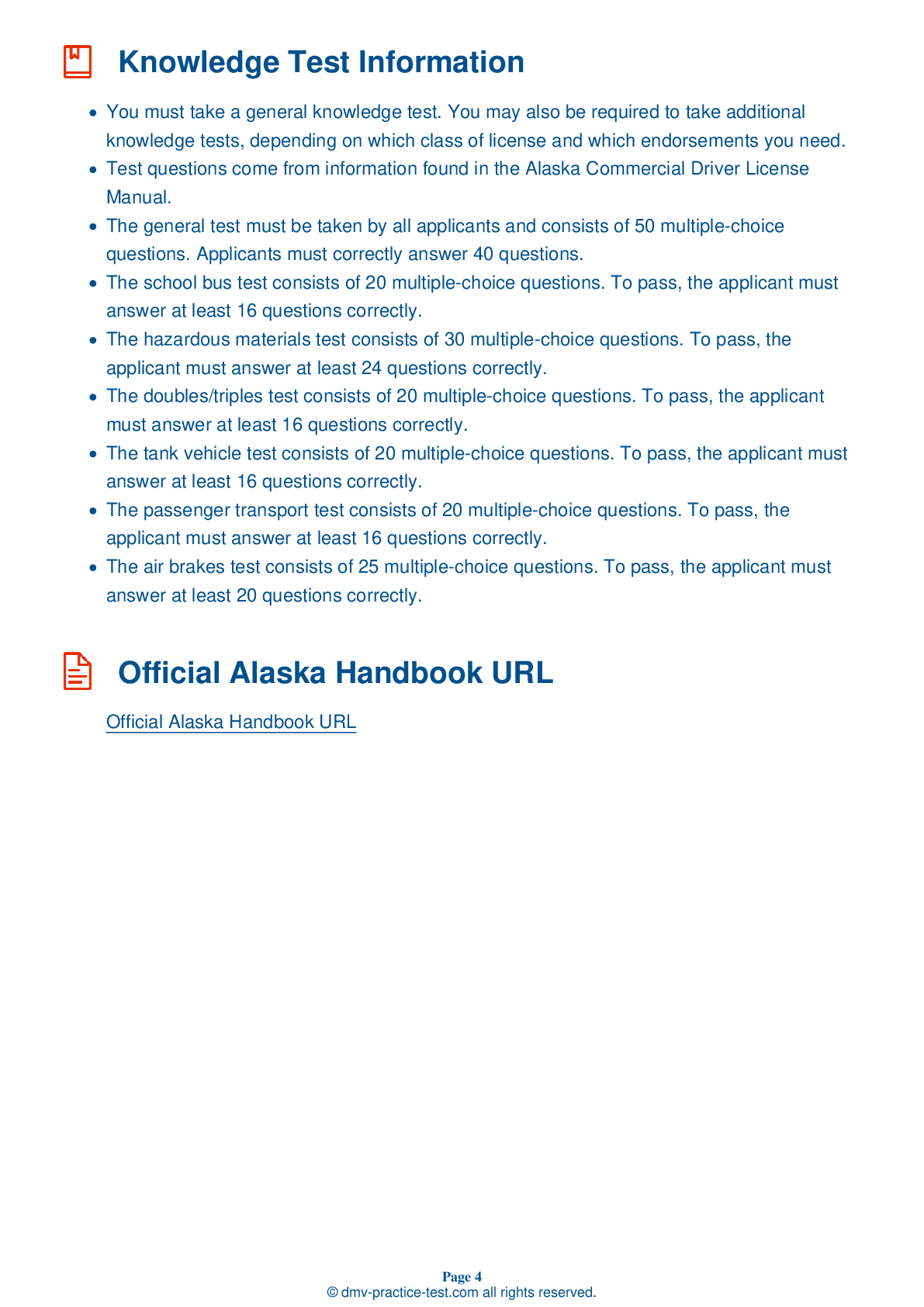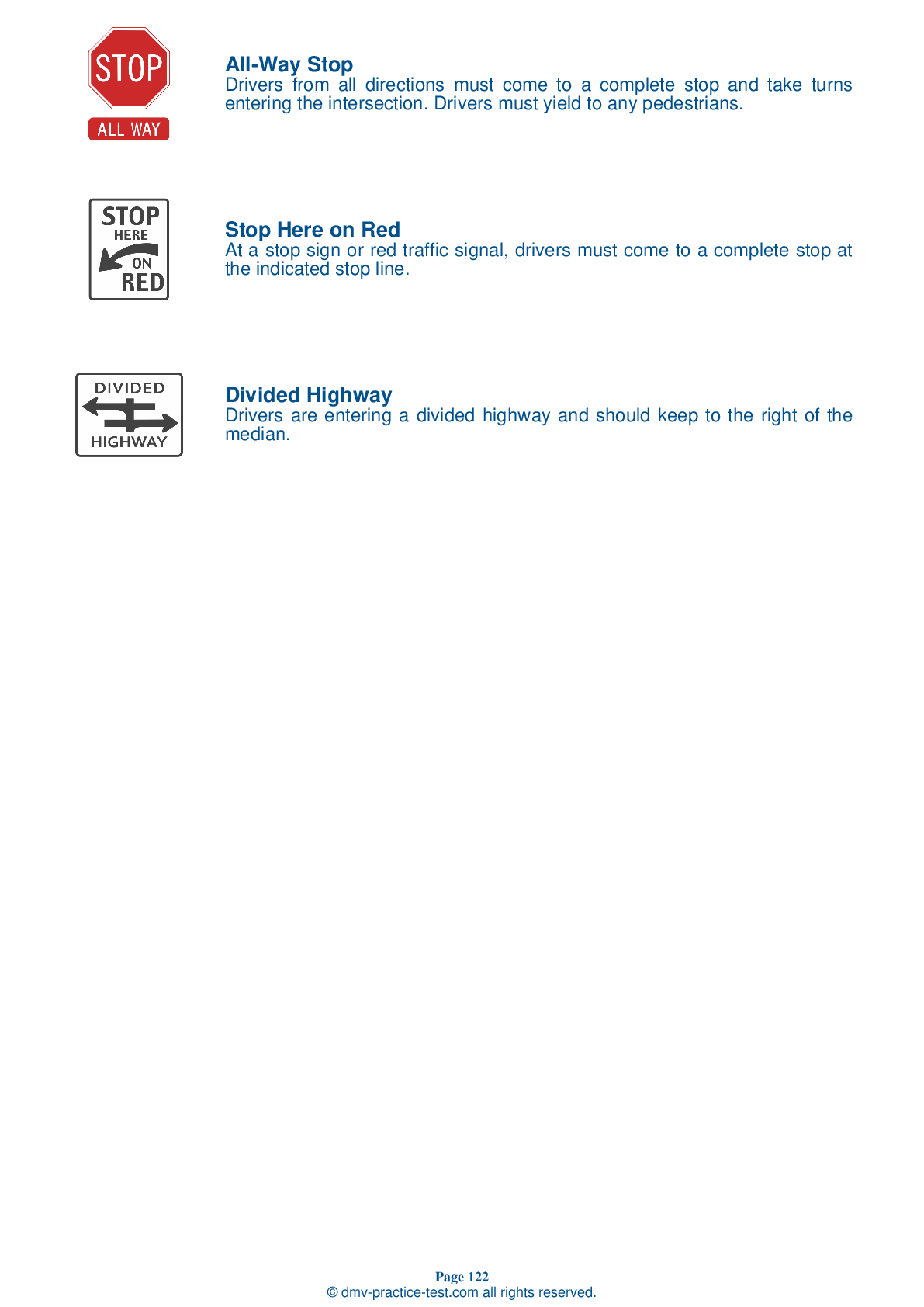Passenger #2
Passenger Endorsement | Alaska 2025 #2
Train for FREE with our Alaska CDL passenger endorsement practice test online. The official exam test consists of several obligatory parts, with all of them checking your knowledge of different blocks of road rules. If you need to obtain a AK DMV passenger endorsement in 2025, practice as much as possible. Free sample tests published on our website will help you check and improve your knowledge and boost your grades. Please bear in mind that DMV requirements for issuing a CDL permit with passenger endorsement may vary from state to state.
20
16
20
1 . If the brakes pull to one side or the other when used:
If the brakes pull to one side or the other when used, it is an indication of brake trouble.
2 . When starting from a stop:
To avoid hitting anything behind you, make sure that your vehicle does not roll back when you start from a complete stop.
3 . In cool weather, as the temperature begins to rise and ice begins to melt:
As the temperature begins to rise and ice on the road begins to melt, the road surface will often become even more slippery. Water from the slight melting will sit on top of the ice, decreasing the available traction even more. Always decrease your speed and drive with caution when traveling on slippery surfaces.
4 . When starting an engine, warning lights and buzzers should:
After starting a vehicle's engine, the warning lights and buzzers for oil, coolant, charging circuits, and the Anti-Lock Braking System (ABS) should go out right away.
5 . When making a tight maneuver, you should:
It is important for you to be aware of your surroundings at all times. To do this, regularly check your mirrors. You should make a particular point of checking your mirrors when merging, changing lanes, turning, and performing tight maneuvers.
6 . The two indicators that determine when you should upshift are:
There are two indicators that determine when you need to shift into a higher gear. One indicator is the engine speed (rpm). You should read your vehicle's manual to learn its rpm range and shift up when you reach the top of that range. The other indicator is road speed (mph). You should learn which speeds each gear can accommodate, then keep an eye on the speedometer and shift up as needed.
7 . Black ice is:
Black ice is a layer of ice that is thin and clear enough for the road to be visible through it. The surface will look like a wet road. Always be alert to black ice if the road looks wet when the temperature is below freezing.
Search the best driving school in your neighbourhood
2025 Alaska | Frequently Asked Questions
A CDL Class A license in Alaska is defined as a commercial driver's license that allows holders to operate any combination of vehicles with a Gross Vehicle Weight Rating (GVWR) of 26,001 pounds or more, provided the towed vehicle is heavier than 10,000 pounds. It typically covers vehicles like tractor-trailers, truck and trailer combinations, tank vehicles, and livestock carriers.
A Class A CDL license in Alaska allows the holder to operate vehicles such as tractor-trailers, truck and trailer combinations, flatbeds, livestock carriers, and tank vehicles. The license covers any combination of vehicles with a Gross Vehicle Weight Rating (GVWR) of 26,001 pounds or more, given the towed vehicle exceeds 10,000 pounds.
To obtain a Class A CDL license in Alaska, you must be at least 18 years old (21 for interstate driving), possess a valid driver's license, pass a vision test, and complete a written knowledge test. You're also required to pass a skills test, which includes a pre-trip vehicle inspection, a basic vehicle control test, and an on-road driving exam.
In Alaska, you must be at least 18 years old to obtain a Class A CDL for intrastate driving (within state lines). However, federal regulations require drivers to be at least 21 years old to drive commercial vehicles across state lines (interstate) or to transport hazardous materials.
While specific endorsements aren't required for a Class A CDL, they allow you to operate specialized vehicles. Endorsements include H (Hazardous Materials), N (Tank Vehicles), P (Passenger Vehicles), S (School Buses), T (Double/Triple Trailers), and X (Combination of Tank Vehicle and Hazardous Materials). Each requires an additional knowledge test, and some require a skills test.
The Class A CDL skills test in Alaska consists of three parts: a pre-trip vehicle inspection to assess your ability to determine if your vehicle is safe to drive, a basic vehicle control test to evaluate your ability to control the vehicle, and an on-road driving exam where you demonstrate your ability to safely drive the vehicle on public roads.
Yes, there are limitations for Class A CDL license holders. These include restrictions based on the driver's experience, age, health status, and specific vehicle features. For instance, drivers may have restrictions if they fail the air brake portion of the test or if they drive a vehicle without a full air brake system. Also, drivers under 21 are restricted to intrastate driving.
In Alaska, the written Class A CDL test is primarily administered in English to ensure drivers can understand road signs and signals. However, the state allows the use of translators or interpreters for those who don't speak English fluently. It's advisable to contact your local DMV office beforehand to confirm their specific policies regarding language assistance.
Yes, accommodations can be made for the Class A CDL written test in Alaska if you have a disability. You need to inform the DMV about your specific needs when scheduling your test. They can provide aids such as audio versions of the test, extra time, or quiet testing environments depending on your requirements.
Yes, if you don't pass the Class A CDL written test in Alaska, you can retake it. However, you must wait at least one day before retaking the test. The Alaska DMV allows multiple attempts, but repeated failures may require additional training or instruction before another attempt is allowed. Fees may apply for each test attempt.




